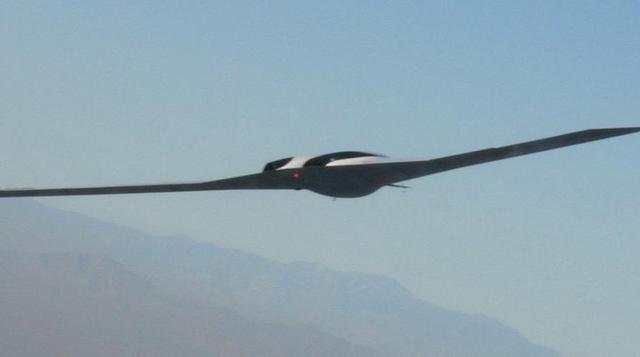Even with recent advances in rapid prototyping techniques and computer aided design, developing new aircraft is an expensive venture — especially when the DoD isn’t footing the bill. So what on Earth could have coerced Lockheed to destroy the only prototype of its blended wing UAV bomber in mid-flight?
Developed and funded by Lockheed’s Skunk Works advanced research department, the P-175 Polecat unmanned high-altitude, long-range flying wing demonstrator was envisioned as both a stealthy surveillance platform and long-range bomber — equal parts Global Hawk and B-2 Spirit. Its all-composite body measured 90 feet from wingtip to wingtip and was built from just 200 individual components. A pair of 3,010 lbf turbofan engines enabled the 9,000 pound Polecat to carry up to 1,000 pounds of ISR sensors and munitions for up to four hours at a time.
The Polecat made its public debut at the 2006 Farnborough Airshow, reportedly just 18 months after its construction began. Lockheed lauded the P-175 as a test-bed for not just the company’s rapid prototyping technology but also its next-gen autonomous flight systems as well. However, these cutting-edge flight controls would soon prove to be the UAV’s downfall.
During a test flight above the Nellis test site in Nevada in December of 2006, the P-175 suffered from what Lockheed vaguely described as an “irreversible unintentional failure in the flight termination ground equipment, which caused the aircraft’s automatic fail-safe flight termination mode to activate.” Essentially, an undisclosed malfunction in the UAV’s command station inadvertently triggered the P-175’s self-destruct routine — an irreversible fail safe installed to prevent the aircraft from straying beyond Nellis’ airspace and venturing into civilian areas — which sent the prototype crashing to the ground, damaging it beyond repair. Though, if it’s that easy to install geographic-based self-destruct routines during the testing phase, why aren’t we putting it on every UAV we operate?
[wiki – Flight Global 1 – Aviation Intel]
